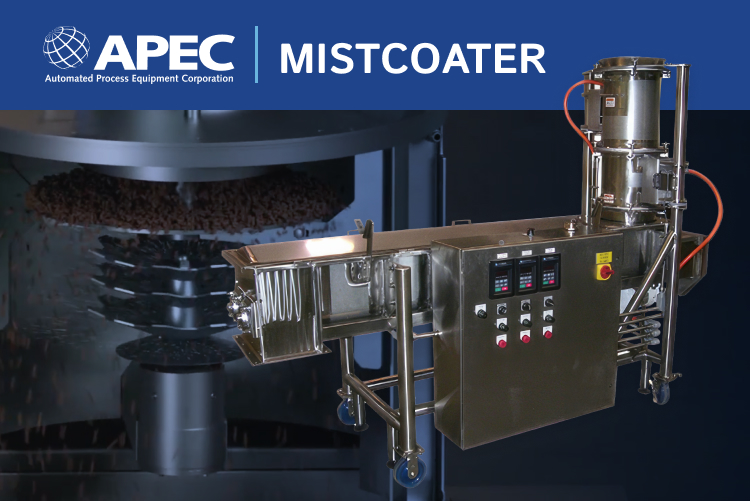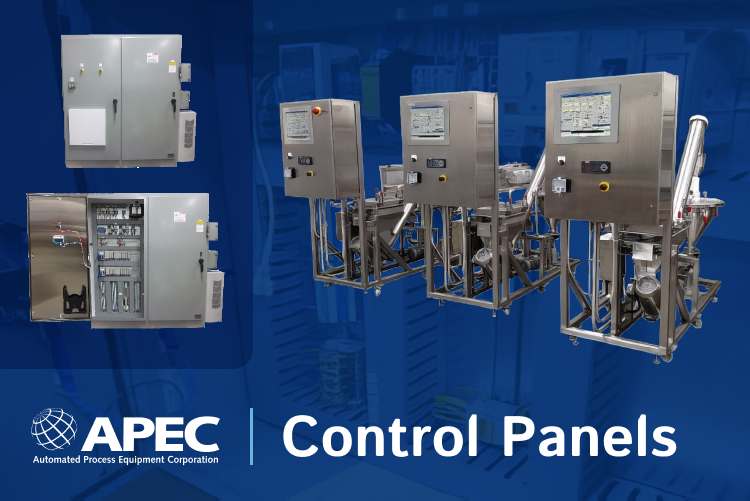
Recent changes in food, environmental, and worker safety have caused many grain and pet food engineers to take another look at their manufacturing facilities. For greenfield sites or renovations, appropriate attention to food and workplace safety regulations from the outset will save thousands in fines down the road. We’ve taken another look at these key safety regulations for manufacturers to know in 2022 and added recent and pending rules.
6 New Food and Workplace Safety Regulations For Grain and Pet Food Manufacturing
In this post:
- Amended OSHA Slip and Fall Regulations
- NFPA 652: New Standards on Combustible Dust
- OSHA New Respirable Dust and Crystalline Silica Standards
- USDA and FDA: Food Safety and Modernization Act
- COVID-19 Protection
- ANPRM for Heat Injury and Illness Prevention
1. Amended OSHA Slip and Fall Regulations
Violations exposing workers to fall or slip accidents occupied three of the top ten most common violations of workplace safety regulations in 2016, including non-compliant ladders, scaffolding, and fall protection equipment. Seeking to remedy these preventable accidents, OSHA amended Regulation 29 CFR 1910 Subpart D, which regulates safety requirements for walking and working surfaces, in 2016. Many of these provisions are already in effect, and several others are required as of November, 2018.
Grain and pet food manufacturers who are building up instead of out, as well as grain elevators and feed storage facilities should pay particular attention to these workplace safety regulations, some which are already enforced with fines.
- Ensuring exposed workers are trained on fall hazards (required May 17, 2017)
- Ensuring workers who use equipment are trained (required May 17, 2017)
- Inspecting and certifying permanent anchorages for rope descent systems (required November 20, 2017)
- Installing personal fall arrest or ladder safety systems on new fixed ladders over 24 feet and on replacement ladders/ladder sections (required November 19, 2018)
- Ensuring existing fixed ladders over 24 feet … are equipped with a cage, well, personal fall arrest system, or ladder safety system (required November 19, 2018)
2. NFPA 652: New Standards on Combustible Dust
The dangers of combustible dust are no mystery to pet food and grain manufacturers. Between 2007 and 2016, 91 explosions occurred due to grain dust alone. In 2016 the National Fire Protection Association’s (NFPA) Standard 652 outlined best practices for evaluating risk and protecting against dust and powder fires. The new standard’s biggest departure from previous standards is the development of Dust Hazards Analysis on existing or future processes.
Though OSHA recently abandoned expanded regulations on combustible dust due to regulatory reform under the Trump administration, experts remind businesses that workplace safety regulations on dust hazards exist under a number of other OSHA standards. Project managers and engineers can manage their combustible dust risk in a number of ways;
- Proper machine maintenance to eliminate dust leaks.
- Separating feed mixing processes into different buildings to manage risk and loss.
- Conducting thorough risk analysis to understand threats.
- Utilizing temperature monitoring sensors to prevent sparks.
- Installing dust monitoring and dust collection systems suitable for your facility and particulates.
3. OSHA New Respirable Dust and Crystalline Silica Standards
Combustible dust laws are not the only dust-related workplace safety regulation grain and pet food manufacturers should be aware of this year. OSHA regulations governing respirable dust particles require workers to use personal protection equipment (PPE) and requires facility managers to measure, manage and keep levels within Permissible Exposure Limits (PELs). In 2017, OSHA amended regulations on exposure to crystalline silica, one of the most common types of harmful respirable dust. When crystalline silica dust is inhaled it sticks to the lungs, causing scarring and irreparable damage.
Though these workplace safety regulations are most important in the construction industry where workers are regularly exposed to hazardous crystalline silica levels, some steps in raw material feed processing, particularly cleaning, can pose respirable dust hazards. To mitigate exposure, take the following precautions;
- Know who is exposed, where, and what causes exposure.
- Measure and monitor harmful or nuisance dust levels.
- Make PPE available and cultivate a culture of safety compliance.
- Utilize dust collection with the right air intake and appropriate filtering.
4. USDA and FDA: Food Safety and Modernization Act

The USDA and FDA jointly oversee provisions within the Food Safety and Modernization Act (FSMA), including those regulating food and pet food. Signed into law in 2011, many FSMA regulations are only now going into effect and under enforcement.
FSMA covers nearly all food and pet food facilities. The FDA’s current FSMA guidance document developed solely for pet food “covers facilities that manufacture, process, pack, or hold food intended for all animal species including food-producing animals (e.g., livestock, poultry, and aquaculture species), companion animals (e.g., dogs, cats, horses, and guinea pigs), laboratory animals, and animals maintained in zoological parks. “Animal food” means food for animals other than man and includes pet food, animal feed, and raw materials and ingredients (see 21 CFR 507.3).”
Pet food and grain processors undergoing process development should be aware of FSMA regulations which concern the following cases, among others;
- Animal foods with high oil content which resist microbial heat treatments.
- Mycotoxins (Aflatoxins, Fumonisins, Deoxynivalenol, Ochratoxin etc.) proliferating in grains.
- Pesticides on grains.
- Plant toxicants (lectin, protease inhibitors, cyanogenic glycosides etc.)
- Animal-specific nutrient deficiencies and toxicity hazards.
- Process or product cross-contamination.
- Metal contamination from process equipment.
5. COVID-19 Protection
One of the most significant recent changes to workplace safety precautions came in response to the COVID-19 pandemic at the start of 2020. Workplaces as well as government offices struggled at times to provide the most helpful precautions to consumers and workers as new studies and information about managing the virus and preventing illness became available. With more data available now in 2022, a number of precautions and protections have been shown to significantly reduce the spread of COVID-19 and help keep employees and customers safer.
Many states, including Michigan, have provided workplace safety guidance regarding COVID-19. OSHA stipulates that state plans must be “at least as effective as OSHA’s and may have different or more stringent requirements.” OSHA has provided additional standards and protections based on particular jobs or industries.
Since COVID-19 is primarily spread through interpersonal contact, these protections are particularly important for food and pet food manufacturers that rely on numerous workers in close proximity to each other. As of August, 2020, over 43,000 meatpacking and food processing workers had caught COVID-19, resulting in nearly 200 deaths. A long list of legal actions by and between government agencies, families, and worker’s groups seeks to make these workplaces safer. A few preventative measures can help to avoid costly litigation.
Reviewing and integrating all of these guidelines can seem overwhelming. However, a few steps can help to simplify things. In their FAQ section, OSHA recommends the following:
- Conducting a workplace risk assessment for potential COVID-19 exposure
- Preparing a response plan
- Taking steps to improve ventilation
- In areas with substantial or high transmission, employers should provide face coverings for all workers, as appropriate
With these guidelines in mind, planning for and mitigating risk of a COVID-19 outbreak are very similar to mitigating other workplace risks. With a clear and transparent risk assessment, you can see which areas and situations require attention, and determine the ideal response. With a response plan in the event of an outbreak in place, you can keep employees safe, and minimize the need for or expenses incurred by an illness outbreak.
These precautions may seem less important as COVID-19 vaccinations become more widespread and the illness, and its variants, become less deadly. However, these precautions can help to reduce the risk and effects of many other illnesses and help to reduce the effects of another, similar, outbreak at a later time.
6. Heat Injury and Illness Prevention
OSHA reports that 18 of the last 19 years were the hottest on record. As temperatures rise, injuries, illness and death related to heat have become increasingly concerning at work. An Advance Notice of Proposed Rulemaking (ANPRM) for Heat Injury and Illness Prevention in Outdoor and Indoor Work Settings seeks to address these issues. Though this is not yet a workplace safety regulation, it provides some insight into what employers can expect in 2022 and beyond.
In 2020, the Bureau of Labor Statistics reported 1,920 incidents of non-fatal injury or illness due to extreme environmental heat. Since 2011, between 18 and 61 people per year have died on the job due to extreme environmental heat. On average, worker heat deaths have doubled since the mid-1990’s. These incidents, and the proposed rulemaking, deal with a wide range of indoor and outdoor occupations, from agriculture to construction, manufacturing to utility work, forestry to landscaping, and many more. These incidents are particularly prevalent in agriculture, and are likely to impact raw materials operations for food and pet food manufacturing, as well as processing operations, such as grain elevators.
Heat stroke and heat exhaustion are among the most serious and common heat-related illnesses. During heat stroke and heat exhaustion, the body’s temperature rises past the level it can take, causing dizziness, nausea, fainting, organ failure and, if not quickly treated, death. Physical exertion, a lack of acclimation to heat, lack of water, and pre existing medical conditions can also worsen heat-related illnesses.
The rulemaking proposal seeks to address environmental heat hazards at work, heat illness response plans, acclimatization (which can reduce the risk of heat illness), and more. OSHA encourages the public to review and submit comments on the proposal until January 26, 2022.
Evaluating and planning for food and workplace safety regulations during project design and installation will prevent future problems. Working with an experienced and reputable process equipment manufacturer specialized in your industry will help to anticipate safety concerns and hazards specific to your facility.








One thought on “6 New Food and Workplace Safety Regulations For Grain and Pet Food Manufacturers in 2022”
Comments are closed.